Zwift announced their new Play controllers yesterday, and the community has been buzzing about it ever since. After digging through several hundred comments on social media and blog posts, I’d summarize the feedback as positive overall, with hints of hesitancy mixed in with the understandable ire of Canadians and Aussies who can’t get the controllers shipped to their countries.
Here’s a post answering many of the common Play questions/comments I’m seeing. Got more questions that aren’t answered here? Comment below and I’ll try to find you an answer!
The Play Race Experience
What’s it like to race with Zwift Play right now? I jumped into an event yesterday and used the Play controllers to find out.
No, I didn’t win the race. And yes, I forgot to steer in the final 500m, which hurt me. Read all about it, including more detailed thoughts on Play for racing.
Play Button Details
What exactly can the Play controllers do? Well, this might change in future firmware/game updates, but for now the following actions are controllable by Play:
- Move between and selecting all on-screen UI elements, including the revamped Action Bar
- Turn left and right
- Brake
- U-Turn
- Navigate intersections
- Change minimap view
- Return a Ride On
- Give a Ride On bomb
- Use Powerup
- Flip to look-back camera for 5s
- Decrease intensity
- Increase intensity
- Skip workout block
For a detailed look at which specific buttons do which actions at which times, here’s a PDF from Zwift:
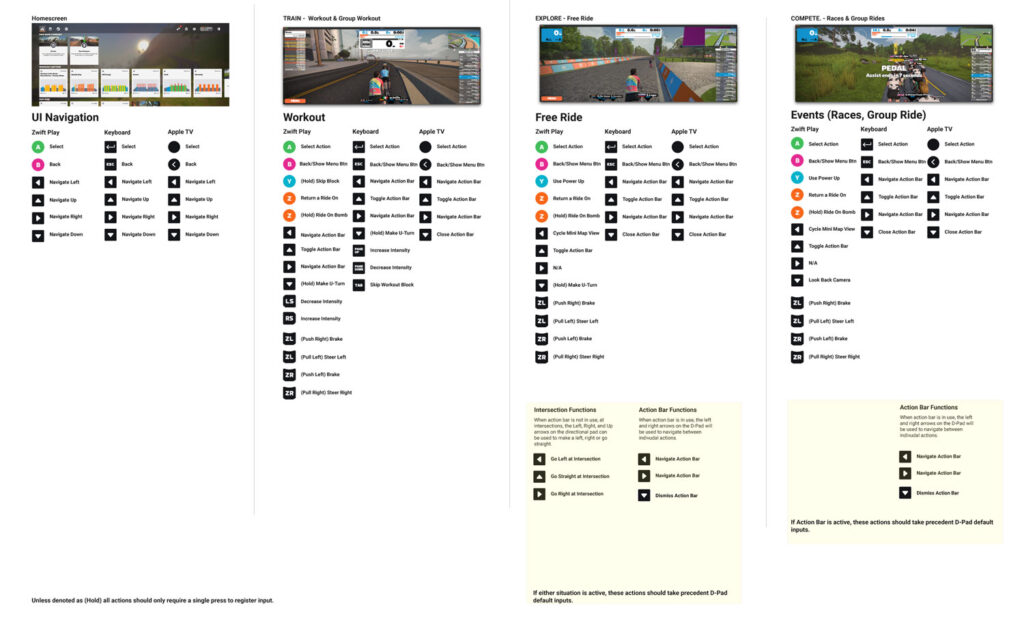
For AppleTV Users
AppleTV is limited to just 3 Bluetooth connections. For many Zwifters that means your smart trainer, heart rate monitor, and AppleTV remote max out what the unit can handle.
So how do you connect the Play controllers, who each use a Bluetooth connection?
Do it using the Zwift Companion app. Connect all your devices to the app, which is on your phone, which is on the same local network as your AppleTV. Zwift can then “see” the devices connected via Companion and use them just like if they were connected directly to AppleTV.
Some Zwifters aren’t keen on this idea because they say the Companion app doesn’t stay connected while they ride. I don’t have a solution for you, except to say if your network is set up properly, the Companion connection should be quite stable. Reading this post may be a help.
What About Sweat?
If you’ve ridden on Zwift for any amount of time, you know that sweat happens. Riders know sweat can destroy your Zwift bike, so one of the first questions they’ve asked is, “Can Play controllers withstand my sweaty hands?”
I asked Zwift this same question, and they told me a couple of interesting things:
- The controllers don’t have an IP rating (like IPX7) because those ratings are for water, and sweat, a much more corrosive liquid, is the issue for Zwifters.
- Play controllers are officially labeled “sweat resistant”. Zwift performed over 300 sweat ingress tests using special liquids and UV lights to track where the “sweat” went, to dial in the design and ensure sweat doesn’t get inside.
Super long-term testing is different than lab tests, of course, but the fact that the buttons are sealed is a good sign.
Our favorite Aussie Lama did a bit of ingress testing himself – see Shane pouring water on his Play controllers:
Haptic Feedback
Play controllers include haptic feedback (“buzzing” or other physical movement of the controllers) for the following events:
- Controllers Paired
- Use Powerup
- Return a Ride On
- Give a Ride On Bomb
- Braking
- Repack Rush: Boost
- Repack Rush: Hazard
- Repack Rush: Bonus Time Pickup
These haptics can be turned off under Settings>Preferences.
Braking: How and Why
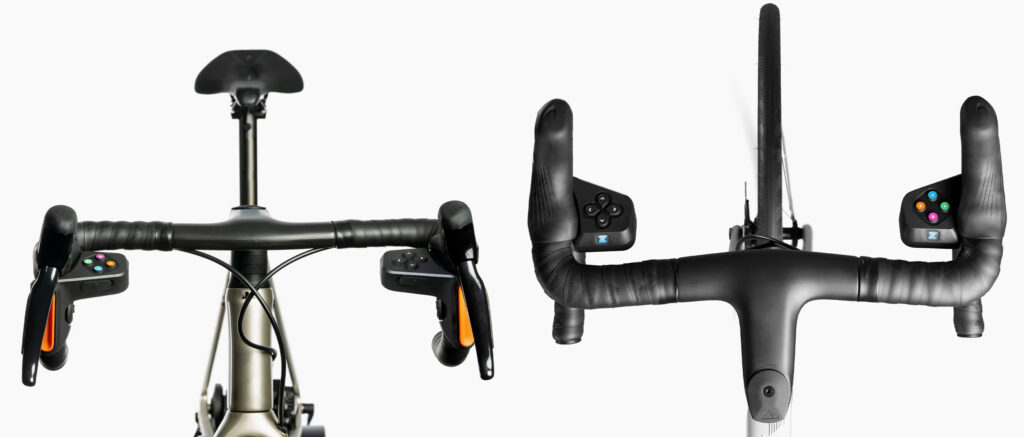
Zwift Play supports braking by pushing either vertical orange “paddle” inward. Zwifters have asked what braking is like – can you brake “lightly” or “heavily”, or is braking just a binary “on-off” thing?
In my tests, braking seems to be just an on-off thing. You slow quite quickly if you keep the brake applied (45kph to 0kph in 7-8 seconds), but if you want to slow just a bit you can tap the brakes to nudge your speed down. So braking is a function of how long you apply the brake, not how hard. (It does feel like applying both the left and right brake at the same time brings me to a dead stop a bit quicker. But I’m not sure why that would be useful.)
Why would you want brakes on Zwift? That’s certainly a sensible question, because who wants to go slower? Braking has no real purpose in Zwift at this point, but when Zwift adds auto-braking to certain corners (automatically slowing riders down to a “safe” speed based on how sharp the corner is), Play would allow Zwifters to handle their own braking and choose an optimal steering line. This (if Zwift does it right) should give a slight advantage over auto-braking/auto-steering.
Bike Compatibility
The Play controllers are made to fit on a standard “drop” handlebar. They will not mount on TT bars or mountain bike bars.
Zwift says they contracted with a London bike shop chain to have them test the Play controllers’ fit on bikes that ran through their shops. This resulted in over 400 bike fit tests, and Play fit on 97%+ of the bikes with drop bars.
The other 3% are probably bikes with some sort of thumb shifter. So Campagnolo’s thumb shifters are a no-go, as are various “sprint shifters” often placed an inch or two down the bar from the hood, on the inside.
While the Play controllers mount nicely on the Wahoo KICKR Bike, they don’t fit on the Garmin Tacx NEO bike, the Wattbike, or the Stages bike according to the Zwift Play Tech Specs. Which leads to the next question: can Zwift make the buttons on smart bikes do what Play does?
Note: some Wattbike owners are saying Play fits on their bike, but the button pads are tilted forward a bit more than they are on standard road bikes.
Play Controller Protocol
Zwift developed their own Bluetooth protocol for Play, and they’ve said this protocol will be open to 3rd parties to use for Zwift accessories. So in theory, smart bike makers could release firmware updates that let all those buttons and levers accomplish some or all of what Play can do.
As far as I know, though, the details of that protocol have not been shared with 3rd parties yet. So there are no firm timelines for when smart bike makers will roll out Play-like functionality.
Firmware Updates
Firmware updates are handled easily in Zwift Companion. Here’s the update flow:
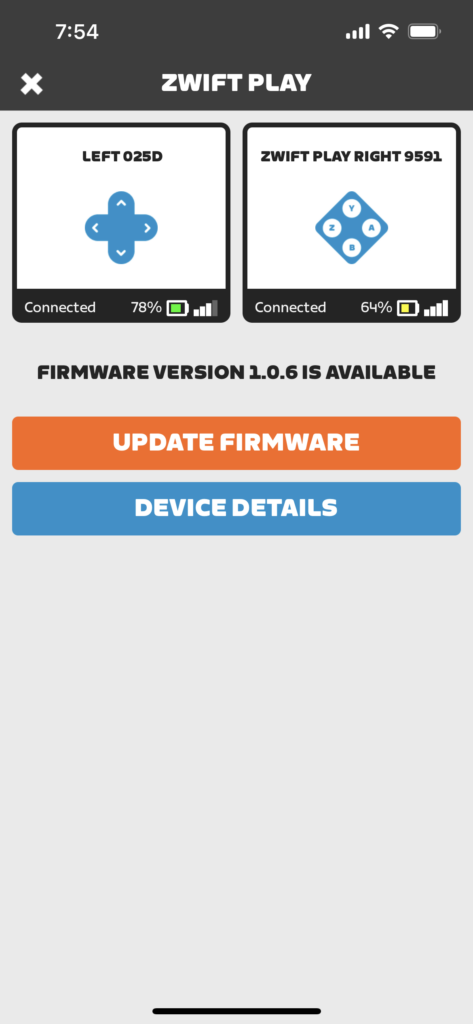
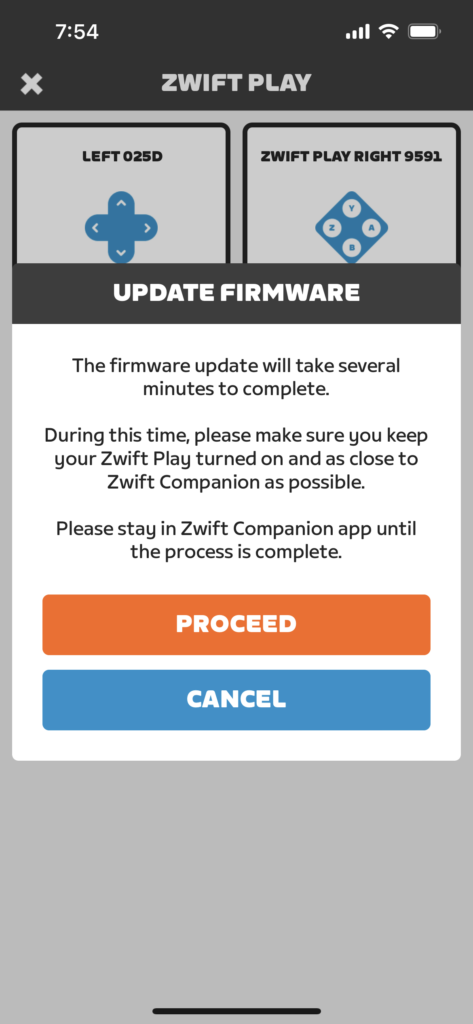
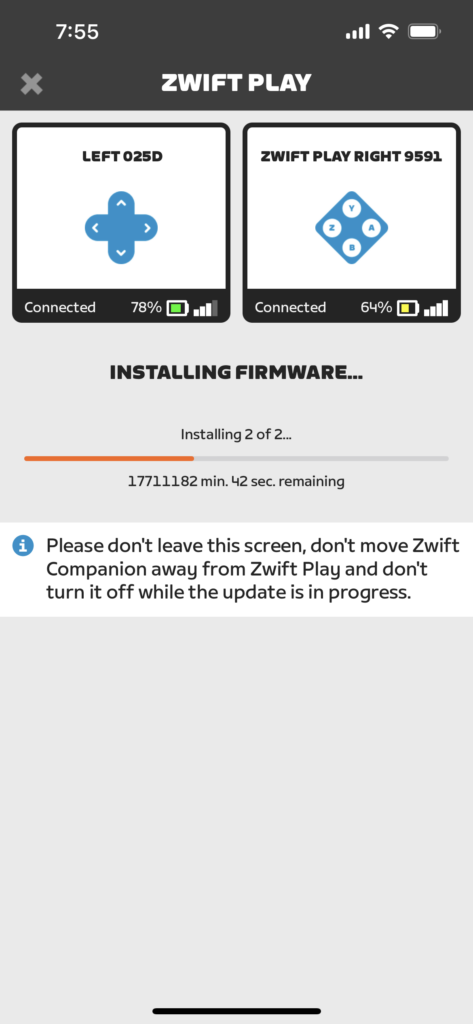
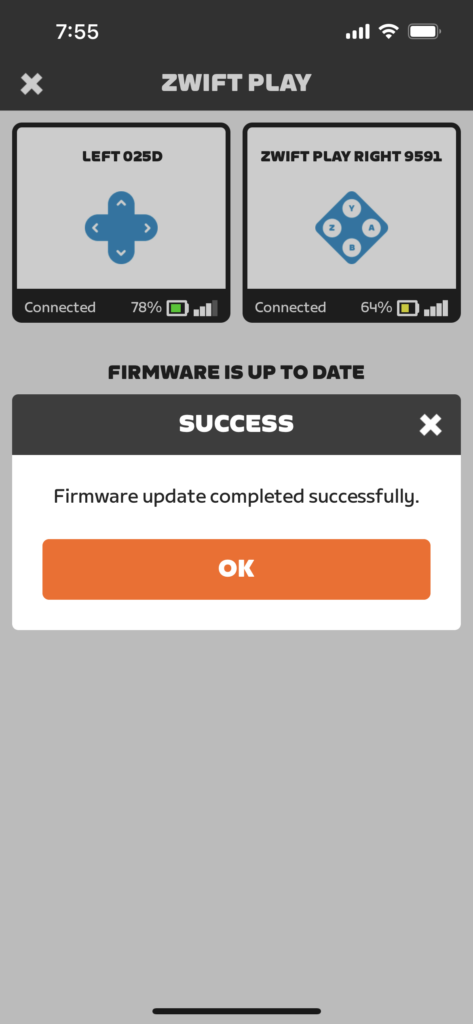
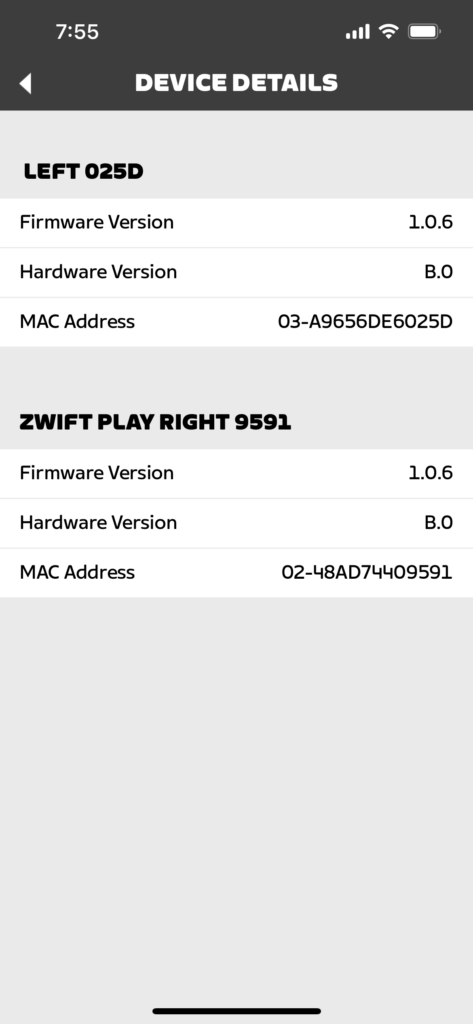
The Play controllers can only be connected to one device at a time, though, so if you connect them to Zwift, then see an alert on the pairing screen that a firmware update is available, you’ll need to disconnect them from Zwift, then connect to them in Companion to do the update.
Pricing and Availability
Zwift Play is being sold at a discounted price of $99/£99/€99 for a limited time (planned MSRP will be $149/£149/€149).
Why the discounted price? Because Zwift needs to build a critical mass of Play users so they can hold events with Play-specific features and gather feedback from a larger cohort of Zwifters. At the same time, Zwift knows it’s not easy to convince folks to buy newly-released hardware, so they’re “rewarding” early adopters with a healthy discount.
Some Zwifters have complained that the MSRP is high. While I agree that $149 feels steep compared to $99, I also have a few more thoughts:
- You can’t compare these controllers to something like Xbox controllers, where millions of units are sold annually. Economies of scale demand that pricing for a more “boutique” product like Zwift Play will be a bit higher.
- You can’t compare the pricing of these controllers to generic Bluetooth buttons/pads you buy on Alibaba. Those are (in my experience) poorly constructed, far from sweatproof, and very limited in their functionality.
- The smart steering blocks from Elite and JetBlack sell for $99, and Zwift Play includes steering and much more.
- In an industry where one company just announced a $5,399US electronic groupset and bikes are regularly priced over $6k, $149 doesn’t feel too crazyanymore.
The controllers are available for purchase in the United States, United Kingdom, and the European Union at zwift.com/play. Why not Canada, Australia, or those European countries not in the EU (sorry, Switzerland!)? For the same reason the Zwift Hub trainer is only sold in the US, UK, and EU: because that’s where Zwift has chosen to set up their warehousing/shipping operations, and because separate certifications are required for hardware in certain countries.
At some point in the past few years, Zwift chose to stop shipping worldwide. When we asked about Canada and Australia shipping today, Zwift’s official word was “Zwift is looking into it but there are no confirmed timelines.”
More Reviews
Looking to hear other takes on Zwift Play? Here are more reviews I found:
Ray always does a great job of diving deep in his articles. Read his Zwift Play review here >
Read a Zwift Play review from Simon von Bromley at BikeRadar >
Questions or Comments?
Post below!